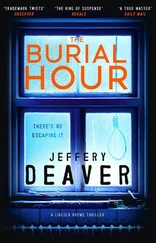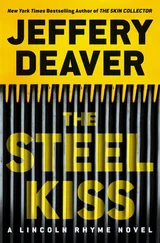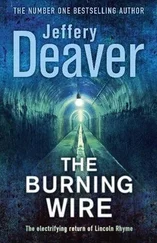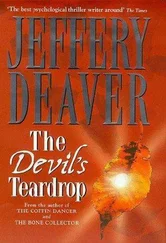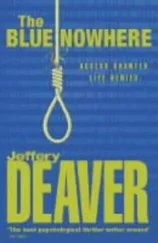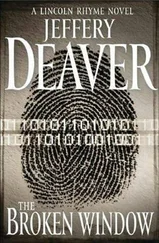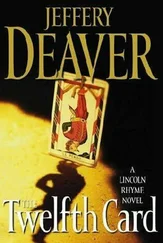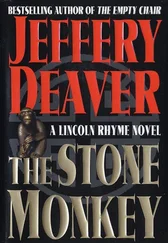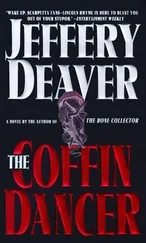Smoking, thinking about where the delivery might be. The huge number of people streaming past seemed to flaunt the hopelessness of the mission.
At last, his phone hummed and he looked at caller ID.
“Yo.”
“Still no word who bodied Rinaldo.”
“Don’t care about that,” Coelho said. “Gimme something about the delivery. S’all we care about at this point.”
The caller was some punk who ran numbers and did drop-offs and pickups for the crews. Similar to the dead Rinaldo’s job. Coelho had never met him, but he was vouched for. He had an accent that seemed to be a mix of three different languages.
“The delivery arrived in town at eleven in the a.m. yesterday. Off a train from Chicago.”
“I know all this. Keep going.”
“Some driver picked it up in Jersey, the depot at Newark. Took it to some location in Midtown. Met Rinaldo for the transfer. Then... nobody knows what happened.”
“‘Some location’ is not particularly fucking helpful.”
“I’m working on that, man. It was the West Side, near the water, someplace they wouldn’t be seen.”
Wouldn’t be seen? Midtown west wasn’t Midtown central but it was still one of the busiest places on the face of the earth. Hell, the traffic to and from the highway running along the Hudson alone meant ten thousand witnesses an hour.
But, he reflected, Rinaldo may have been stupid enough to get himself killed but he wasn’t stupid when it came to his job, especially a task entrusted to him by the infamous Miguel Ángel.
“K,” Coelho told his contact. “I’ll head over there now. But stay on top of it. I need an address. There’ll be something in it for you. Promise.”
“Thanks.”
They disconnected.
Zipping his jacket up, not so much for the cold, which it really wasn’t, but just so his concealed gun stayed concealed, Coelho started the walk to Midtown, calculating how many calories the hike would burn.
A fair amount, he reflected happily and bought a hotdog and a Coke to tide him over on the journey.
“There’s more here than it seemed last night,” said Mel Cooper dubiously, nodding at the mass of evidence from the Echi Rinaldo crime scene, laid out on the evidence tables in Rhyme’s town house.
“Is there really?” Rhyme glanced over at the slightly built, bespectacled man. The response had been ironic. The meaning: What’s the point of stating the obvious? Beneath was the subtextual message: If there’s so much perhaps we should be analyzing and not discussing.
Cooper was the preeminent forensic lab technician in the NYPD’s crime scene operation, headquartered in Queens. He frequently worked with Rhyme and Sachs, manning the equipment here. He’d arrived last night, worked until 4 a.m., headed home to his mother’s house for a bit of sleep and was now back, robed and masked like a surgeon.
“We’re not making any progress.”
“Now, that is a valid observation.”
The analyses of the effluvia from the streets of Midtown was yielding no leads, and so Rhyme considered next steps. He said to Cooper, “Rinaldo’s burner phone’s still with Szarnek down at computer crimes. It had some kind of wipe feature, but they’re trying to restore the data.” Rhyme wheeled to a table, on which a Post-it note had been pasted. It read: Found within six feet of victim. It was a mountain and included two dozen different shoe print and fifty different fingerprint samples. Three used condoms. Rhyme grimaced, not at the distasteful aspect of these particular items but because while the odds were minimal that the killer took time before or after the slaughter to have protected sex, he might actually have done so.
And, though Rhyme despised clichés, the adage about no stone being left unturned was the bylaw for crime scene work.
There were also piles of trash — literally — from the route where the blood trail began to the place near the middle of the alley where Rinaldo had died.
Rhyme made a decision. “Let’s focus on where he’d been earlier and who he’d been in contact with. He was a deliveryman... if we can pin him to locations where he made his deliveries, we might find somebody he hooked up with.”
“And who had a motive to kill him.”
“Maybe. That’ll be for Amelia to find out. Our job is just to find the where and the who.”
As he surveyed the evidence that might be helpful in their new task, Cooper asked, “Any chance Lon’ll be up for working the case? I was talking to him last week. He seemed a bit better.”
Rhyme shook his head. Lon Sellitto, his former partner and the Major Cases detective who officially ran the investigations Rhyme assisted on as a consultant, was still ill, laid low by a poison attack in a recent case. “I asked, and he’s still out of commission.”
Cooper sighed. “Even after all these months?”
He’d nearly died. It was a medical miracle that he’d been saved.
Rhyme dismissed the subject with: “Let’s get to it. Anything on the body or on the bed of the truck or tire treads that’ll give us a history of where he was earlier in the day?”
It was clear there’d been a struggle and Rinaldo had fought his assailant. Locard’s Principle, named for the French criminalist Edmond Locard, holds that there is always a transfer of evidence between perp and crime scene or perp and victim. This is especially true in the case of physical struggle. Ideally, Rinaldo would have dug some telltale DNA from his killer’s skin with his fingernail as he fought the man. Now, reading the ME’s and Sachs’s reports, they learned that Rinaldo had worn gloves. Trace from the gloves and his coat, run through the gas chromatograph/mass spectrometer, revealed no chemicals that might lead them to a particular location or suggest a profession that the killer might have had or hairs or other DNA-rich evidence.
Rhyme sighed. “Tires and Rinaldo’s shoes. Let’s see what they collected.”
Fortunately the truck had fairly new tires — and the victim had worn treaded running shoes — so there was a fair amount of soil trace in both.
Cooper prepared a sample for the GC/MS. As he did so, Rhyme squinted and turned away from the machine. He’d heard the faint sound of a key in the front door (after the accident rendered him disabled, he was convinced that his surviving senses grew more acute). Thom was in the kitchen, so this would be Sachs, who’d left earlier to pick up Rinaldo’s son at a Child and Family Services facility and take him to an emergency foster care family. He was glad she’d returned; he wanted her insights into the case.
But then he heard something in addition to her footfalls, something that troubled him.
Another set of steps, softer.
He sighed.
“What’s wrong?” Mel Cooper asked, noting the expression.
He didn’t answer.
Sachs turned the corner with a companion. The boy, strapping and dark-skinned, with crewcut black hair, stopped in the parlor doorway, eyes wide as he gazed at the equipment.
Sachs gave a faint smile at, Rhyme supposed, what would be his look of dismay. She said, “This is Javier.”
“Hi,” Mel Cooper said.
Rhyme nodded, forcing a smile onto his face.
The boy nodded cautiously then turned back to the machinery.
Sachs paused only a moment and, knowing what Rhyme would be thinking, said, “Javier’s not staying here. The foster family’s not far away, on the West Side. I told him I’d stop here and he could meet the people who are going to catch the man who killed his father.”
The boy fiddled with what looked like a pencil box. It had a picture of some boxy cartoon characters and the word “Minecraft” on it. He also held a tablet of drawing paper and Rhyme could see some sketches of similar characters. They were pretty good for a child of his age.
Читать дальше

